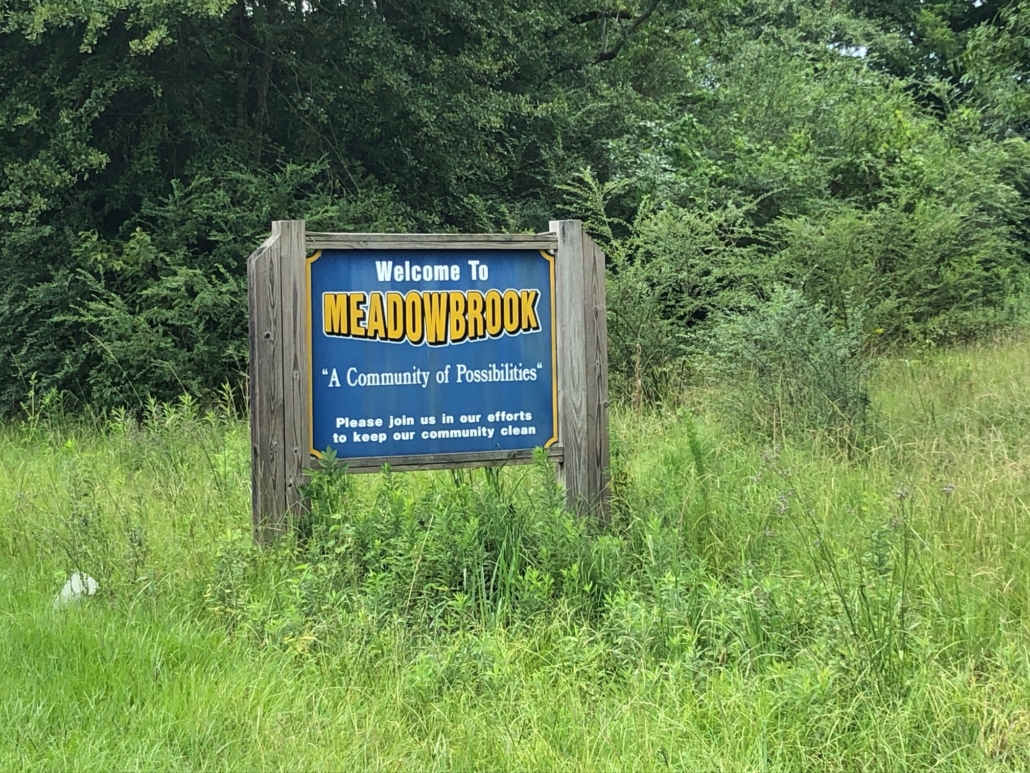By Phillip Ensler, Appleseed Policy Counsel

CAMDEN, ALABAMA — In 1965, Dr. Martin Luther King Jr. visited Wilcox County to encourage black residents to register to vote. He told them, “You are somebody.” Yet in my visits to Camden over the past few months, I learned about and witnessed the cruel effects of black families being treated as less than “somebody” for decades following Dr. King’s appearance.
I went to Camden to conduct a civil legal needs assessment of several Black Black Belt counties. I saw first hand the substandard housing conditions that still plague black families there today as a result of years of inferior treatment.
According to residents of Camden, registering to vote and voting for one’s candidate of choice could be dangerous for a black person in Camden in 1965. Black sharecroppers risked retaliation if they did not follow their landowner’s orders – which included not registering to vote or voting only for the candidate the owner dictated them to. Black farmers and their families were already subject to harsh living conditions, including lack of indoor plumbing, and they did not want to do anything that would cause the landowner to inflict further pain.
Starting in the late 1960’s, the federal government offered black residents—especially sharecroppers—some relief from the tyranny they were living under. The federal government contracted with a private company to develop single-family, affordable homes for black and white residents in Camden. Families could either buy the homes outright from the federal government or they could take out a federal housing loan.
Some homes were to be built in “black” parts town and some on the “white” side. According to one Camden resident, “we were just happy to get somewhere with indoor plumbing.” These houses offered more than just better conditions: they offered a sense of dignity and freedom. They gave black families the opportunity to rid themselves of a white landowner’s rule and a greater ability to answer Dr. King’s call to exercise their freedom.
Hattie Bridges was a teenager when the houses became available for purchase. Up until then, her family, the Smiths, lived in Miller’s Ferry, where her father was a sharecropper. Her parents supported the Civil Rights Movement, but prohibited Hattie and her siblings from participating in any protests, including Dr. King’s visit, because they feared retaliation from the white landowner on whose property they lived and farmed. Hattie’s father eventually took out a loan from the Federal Housing Administration to purchase one of the homes built by the government. Hattie was happy to have somewhere to stay and glad to get in a house with a bathroom.
That happiness was short-lived. Structural deficiencies made for a difficult living situation. The house was made entirely of wood. Rainwater would leak through the roof, eventually getting so bad that they needed a new one. They visited the local United States Department of Agriculture and Federal Housing Administration office in downtown Camden to seek assistance. The government told them there was nothing they could do. Without the money or options to live elsewhere, the Smith’s scraped together what money they could to eventually put a tin roof on the house.
But that was just the first of endless struggles. The government promised to install a furnace in the home for the cold winter months. It never happened. The Smiths endured year after year in that house, paying for the constant repairs to keep it habitable. Hattie now lives around the corner from her 93 year-old mother, Dollie, who still lives in the same home. The family took out loans and spent what they had to make the home more comfortable for Ms. Smith as she lives out her years hooked up to an oxygen tank.
Hattie and her family were not the only ones to experience such shoddy conditions. In 1969, the Stallworths purchased one of the wooden homes constructed by the federal government. Weedie Stallworth, whose parents bought the house, recalls it taking only three days for the builders to construct the entire house.
The concrete foundation deteriorated over time, as the home was built on swamp land. The foundation decayed to the point of leaving cracks throughout the kitchen floor. Like Hattie’s family, the Stallworths were promised a furnace. There was a small closet built in the hallway where they were told it would be installed. Fifty years later, there is still no furnace. The Stallworths used layers of blankets and space heaters to try and stay warm.
The circuit breaker that came with the house did not have enough amperage to supply electricity for the entire home, and the building was filled with faulty wiring. This caused the breaker to blow many times, including one instance in which it caused a house fire that damaged the house and burned down a tree in the front yard. The wood ceiling easily leaked and eventually cracked from rainfall. The one shower in the house does not work, so Weedie and her family travel to a relative’s home to bathe.
When Weedie washes the dishes in the kitchen sink, brown water occasionally comes up through the shower drain. Sometimes when they flush the toilet, water comes up in the kitchen sink. The pipes from all of the plumbing stick out into the backyard through the original holes in the wood that they were built in. The openings in the wood allow insects and drafts to slip into the house.
Over the years, the federal government periodically sent contractors or plumbers to make repairs. But those band aid fixes always only lasted for so long.
After pleading with the government and the power company to install a safer and more sustainable electrical system, Weedie gave up. The home is now without electricity. This means no air conditioning or fans during the brutal summer months. With their house unbearably hot, Weedie and her family stay away from their home during the daytime as long as they can, only coming back in the evening as the sun goes down.
These issues were not unique to Hattie and Weedie. Black families living in dozens of the wooden government homes throughout Camden have endured similar horrific conditions. The government dug holes in the backyards for septic tanks that were never installed. The government never installed heat. Multiple homes have caught fire and burned down, likely due to the faulty wiring and overheating caused by inadequate circuit boxes. Termites ate away at the wood of many of the homes.
In another home, the ceiling—weakened by rainfall—collapsed one night onto a mother and her two young children. Fortunately, they escaped without injury. That same home has a gaping crack running several feet long through the kitchen floor. The foundation around the back door of the house has deteriorated to the point that there is a gap of several inches between the bottom of the door and the base of the house. The owner stuffs clothing and towels in the gap to prevent rain water and rodents from entering the home. The bathroom sink completely stopped working some time ago, leaving them to use the kitchen sink for basic hygiene, such as brushing their teeth.
Several years ago, Camden City Councilman Gene Mack—who represents many of the neighborhoods in which black families purchased the government homes—started learning from many of his constituents about the conditions of their homes. He quickly realized a pattern: the homes in the “black” parts of town were all made of wood. They had been built in just a matter of days. They had many of the same, inadequate conditions. The owners had long track records of pleading with the federal government to make improvements, yet found little success. The residents had forked over thousands of their own dollars to make repairs when they could.
Councilman Mack was determined to find some sort of relief for these families. He says he tried to contact the company who had contracted with the government to build the homes, only to find out that they were no longer in business and that their founder was incarcerated in another state for fraud. He looked into some documents from the homes and gathered information throughout town. He claims that black and white families paid the same prices for their homes. Yet there was one appalling distinction. The homes built for black families were all made of wood. The homes built for white families were made out of sturdier and more sustainable brick.
The black homeowners assumed that the federal government would build the best possible houses. They assumed that the federal government would treat them equally. They did not know that there was a systematic pattern of substandard housing conditions. Most never contacted a lawyer because they never thought that they might have a legal issue. One resident who did ask a lawyer if there was a potential lawsuit, was told that the construction company was no longer operating and therefore there was no one to hold liable for the conditions.
Councilman Mack has not been one to simply accept that answer and move on. He believes there is still justice to be found. He and the dozens of families are just not sure how to pursue it. Identifying and securing legal guidance or any avenues of relief has continued to be a challenge.
Appleseed is committed to working with Councilman Mack and the residents of Camden to seek justice. We will partner with them to explore and advocate for potential remedies that could improve the conditions of their homes. More than fifty years after Dr. King told black residents of Camden that they mattered, perhaps the homeowners there will be shown that they matter.


